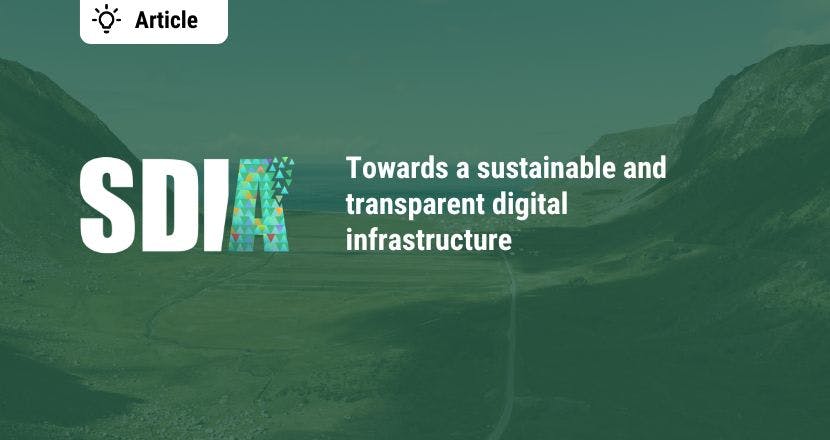Cloud computing has emerged as an essential IT infrastructure paradigm of businesses around the globe, transforming capital-intensive resources into pay-per-use, on-demand services. “Public” clouds offer scalable and accessible digital resources to a wide range of customers.
However, despite their name, these clouds are not truly public, as they are owned and operated by private corporations.
We believe a well-regulated marketplace could turn closed, private markets for digital resources into a real public utility. In our view, a marketplace could ensure fair competition as well as equal access to computing and storage capacity.
Society is dependent on digital resources and a public market helps safeguard availability
The first argument challenging the notion that public cloud services are truly public lies in their approach to accessibility. While public clouds are widely available, they do not guarantee equal access, as users must pay for the resources they consume, with pricing varying between each customer.
In contrast, public services are usually designed to be universally accessible, ensuring that every citizen has access regardless of their financial situation. These services are managed by public institutions accountable to the public, operating with transparency and prioritizing the public good. This is clearly not the design intention of the large-scale digital conglomerates who made the “public” cloud. Their design criteria was shareholder-value and profit maximization.
In today’s digital age, cloud computing has become as vital as traditional public utilities such as electricity or water. Both the digital infrastructure industry - comprising data centers, IT infrastructure providers, and cloud infrastructure and services - and the energy industry, represented by the electrical grid and generators - are large, technical, and complex systems that place a premium on 100% availability.
Our daily lives are increasingly dependent on digital services hosted on cloud infrastructure, from communication and entertainment to essential services like healthcare or financial services. This dependency results in digital infrastructure being the fastest growing consumer of energy globally. The criticality of digital infrastructure means that it must be reliable, secure, and accessible to all.
A well-regulated marketplace for digital resources could help safeguard availability. When public services are operated in the public interest, a regulated market can provide oversight and enforce standards for reliability, accessibility, and sustainability. This would be similar to traditional utilities, which operate under regulations to prioritize public benefit over profit motives. A regulated market would ensure equitable access, fair competition, and could be governed by the principles of public accountability and transparency. This would align digital resources and cloud infrastructure more closely with how traditional public utilities operate, safeguarding availability and ensuring that infrastructure benefits society as a whole.
Markets remain the most efficient way to maximize utilization of digital infrastructure
Current cloud infrastructure operates on a pay-per-use model, making it a commercial service rather than a public good. This model is highly profitable for the cloud infrastructure operators, who gain substantial returns from the capital goods: data center facilities, ICT equipment, and infrastructure software.
At an annualized average utilization rate above 30%, the business is profitable. This high return on investment makes it an optimal way to allocate funds, particularly for cash-rich global digital service conglomerates like Amazon, Microsoft, and Google. Revenue generated from the cloud infrastructure and services they own directly benefits them – deepening their profitability and market dominance.
In contrast, public services such as public transportation systems or libraries are funded by taxpayers and managed by government entities. These services are designed to serve the public interest while ensuring accessibility and affordability for all citizens. If “public” clouds were truly public, decisions at the operational level would be driven by societal values and public interests, rather than profits and commercial interests.
To illustrate this further, think of power plants. If a private company owns a power plant, it has the ability to set prices and control utilization rates. At 30-40% utilization, a power plant can already be profitable, but this typically results in higher prices for consumers. From a societal perspective, it is more beneficial to run power plants at around 80% utilization, as this optimizes resource use, reduces waste, and minimizes pollution. However, private companies may not want to increase utilization rates if they can be more profitable at a lower utilization rate.
This is where regulations play a crucial role, ensuring that essential services like electricity (or cloud infrastructure) operate in a manner that prioritizes public benefit while adhering to environmental standards. In the case of power plants, strict regulations ensure that prices are fair and resources are used efficiently to serve the public interest.
A regulated marketplace for digital resources and cloud infrastructure can unbundle the less profitable infrastructure segment from the more lucrative Platform-as-a-Service (PaaS) and Software-as-a-Service (SaaS) offerings, leading to the commoditization of digital resources. This would enable any IT infrastructure provider to compete for workloads (demand), allowing cloud service providers to obtain digital resources from a standardized, cost-efficient, and on-demand market. Such a system can greatly enhance utilization rates, increase IT infrastructure efficiency, and reduce costs, thereby speeding up digital transformation across industries.
A public market enables transparency and thus effective government intervention
A public market for the procurement of digital resources would bring about the necessary transparency and enable effective government intervention. This approach would address the issues arising from the current market model, where the focus is on profits, often at the expense of everything else. Even if not fully public, a well-regulated market can ensure fair competition, enhance transparency, and promote sustainability.
Drawing from the parallels with electricity markets, which have evolved over the last century to address similar challenges, we see that both digital resources and electricity share characteristics as utilities, being transient, instantaneously consumed, and increasingly life-critical.
The pre-market consolidation behaviors of electricity suppliers mirror the recent mergers and acquisitions in the digital infrastructure sector. By adopting the lessons learned from liberating the energy sector and applying its market model to digital resources in Europe, we can circumvent the historical bottlenecks faced by electricity markets.
Such a marketplace would create fairer conditions, enabling more European IT infrastructure providers as well as infrastructure SMEs and innovators to enter the market and stimulate diverse national and regional digital infrastructure. Interoperability would replace vendor lock-in, enhancing quality and suitability of services. Additionally, competition would drive efficiency, increasing both data center facility utilization rates and ICT equipment utilization, thus reducing energy waste and lowering carbon emissions. Consumers would benefit from more competitive and transparent pricing, accelerating Europe's digital transformation.
In conclusion, while public clouds are essential, their private ownership and profit-driven nature mean they do not function as true public utilities. A well-regulated marketplace would ensure the infrastructure is managed for societal benefit, ensuring equitable access, public accountability, and efficiency, thereby aligning with public interests and achieving a transformation similar to that of the European electricity sector.




.jpg?ixlib=gatsbyFP&auto=compress%2Cformat&fit=max&w=1080&h=675)
.jpg?ixlib=gatsbyFP&auto=compress%2Cformat&fit=max&w=1800&h=600)
.jpg?ixlib=gatsbyFP&auto=compress%2Cformat&fit=max&rect=0%2C44%2C600%2C800&w=600&h=800)